Life is so busy and hectic these days; who has time to brush the dog? It’s understandable to feel that way, but once you are aware of all the benefits of brushing your dog, you’ll make the time. After all, you would do anything for your dog to have the best possible life, right?
If you have a puppy or a dog who hates to be brushed, you may need to start off slow, with just a few minutes of brushing followed by a special treat that they only get after being brushed. With that being said, here are the top 7 benefits of brushing your dog.
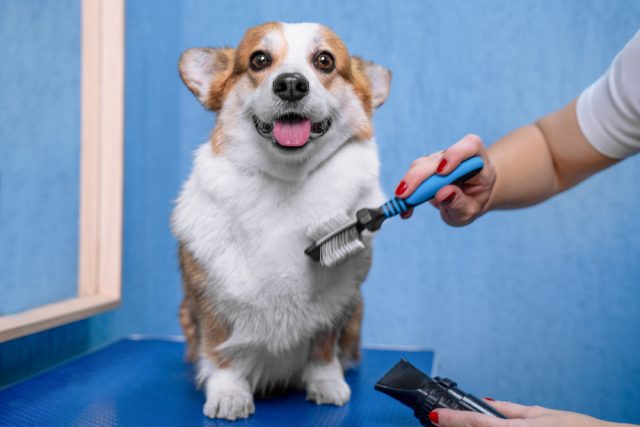 Benefits
Benefits
#1 – It can be a bonding time
If your dog enjoys, or at least tolerates, brushing, then the time you spend can be a great bonding time. The routine of it can be soothing to both you and your dog and a way for you to de-stress after a rough day.
#2 – Brushing helps distribute the natural oils in your dog’s coat
Dogs’ coats contain natural oils, but since dogs don’t groom themselves as obsessively as cats do, they need a little help spreading those natural oils around. It will help them looks shiny and fabulous and prevent any greasy buildup.
#3 – It helps to prevent painful mats
If you’ve ever had somebody pull your hair, you know how painful it can be. Now imagine that same sharp sensation over your entire body and you’ll have an idea of how miserable a matted dog must be. Not only are mats painful, but they can hide and even cause skin problems like wounds and infections. Nothing says “I neglect my dog” more than hair that needs to be shaved off in one piece.
#4 – Brushing allows you to spot anything unusual, such as bumps or parasites
Brushing your dog regularly helps you get to know how your dog’s skin usually looks so that you can notice anything different. Some bumps are harmless, but if you spot one that isn’t, early detection can mean the difference between life and death.
#5 – It reduces shedding
The more hair you can get off of your dog with a brush, the less hair will be floating around your house, on the furniture, and all over your clothes.
#6 – Brushing helps your dog look good
Let’s face it – a well-brushed dog looks better, happier, and healthier than one that’s not. Letting your dog’s hair become unruly screams at the world that you don’t have enough time or love for your dog – even if that’s not true.
#7 – It helps your dog stay comfortable
Not only do mats hurt, but trapped undercoat can cause your dog to overheat.
Related: The 10 Best Dog Brushes For Brushing Your Pup
How to brush your dog
Brush down and out
Dogs generally don’t like to have their hair brushed backwards. If your dog has long hair, you may need to use one hand to lift up the coat and another to brush underneath the hair you just lifted. This helps ensure you are brushing all the way down to your dog’s skin and not just making the topcoat look pretty.
Be gentle
Tugging on mats is painful for your dog and can make them hate the grooming process. Be as gentle as possible to avoid hurting your dog.
Use conditioning spray on mats
For those tough to comb out mats, a detangler sprayed directly onto the mat and worked in with your fingers can help knots slide apart more easily. This should be done before the bath, as water can make mats worse.
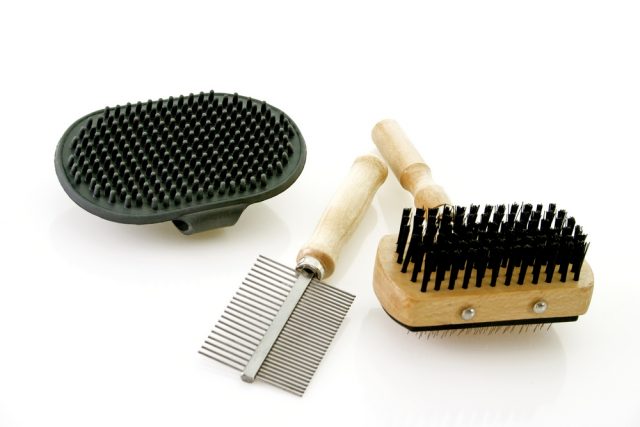 What type of brush do you need?
What type of brush do you need?
Short-haired dogs (Labs, Pugs)
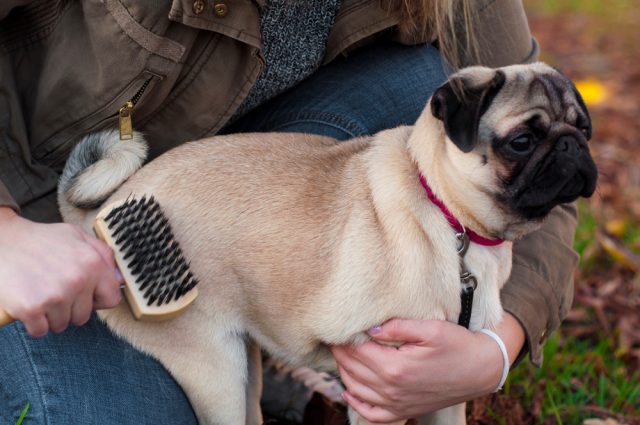
Anybody who owns a short-haired dog knows they can shed as much as – if not more than – any other coat type. Using a rubber brush, a grooming glove, or a natural bristle brush can help remove loose hairs before they wind up embedded in your furniture. A detangling tool may be used, but sparingly – you can cause bald spots and irritate your dog’s skin if you aren’t careful.
Double-coated dogs (Huskies, Goldens)
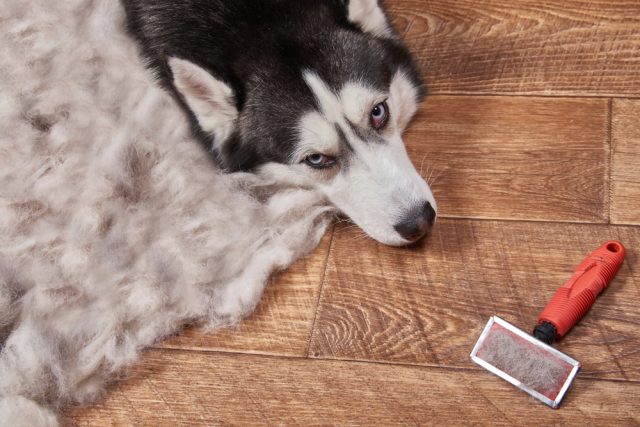
These dogs have a soft undercoat that sheds, usually seasonally, and a tougher topcoat that usually doesn’t shed. Brushing these dogs out regularly can help prevent hairy tumbleweeds from rolling around your house when your dog starts “blowing” their coat. Tools that work best on this type of coat include a slicker brush, a pin brush, an undercoat rake, or a comb.
Silky-coated dogs (Maltese, Shih Tzus)
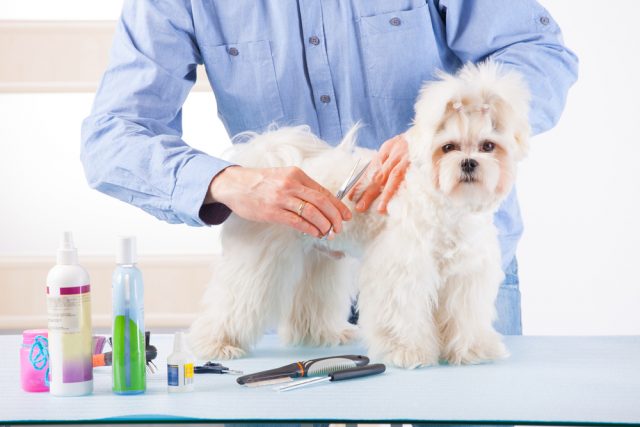
Silky-coated dogs have fine hair that grows continuously. They should be groomed regularly, but they do need to be brushed as often as every day in between haircuts. A pin brush, a comb, a dematting tool, and a dematting spray will be your best friends.
Curly-coated dogs (Poodles, Bichons)
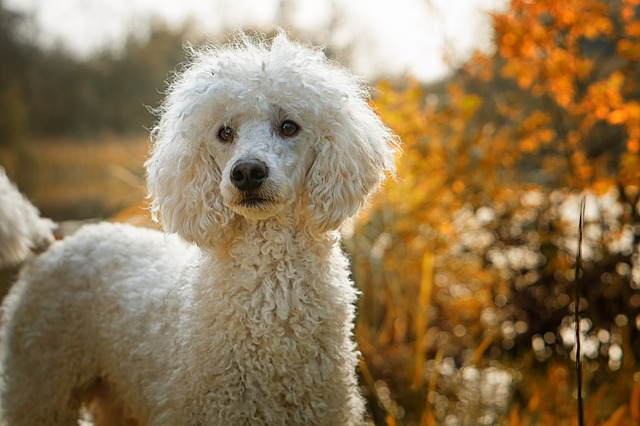
These dogs need brushed several times a week, if not daily, to prevent their curls from turning into mats. A slicker brush, comb, dematter, and dematting spray are ideal for this type of coat.
Wiry dogs (Terriers, Schnauzers)

These dogs have coats that often need either trimming or hand stripping and may have undercoat that needs to be brushed out. Weekly brushing with a slicker brush and a comb will prevent mats from forming in their wiry hair and keep them looking spiffy.
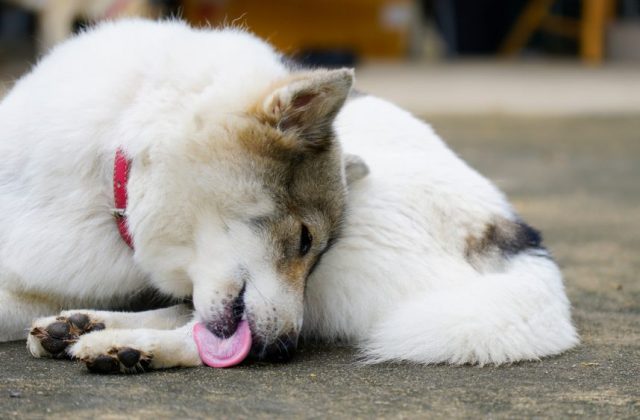

 Toledo, United States.
Toledo, United States.
